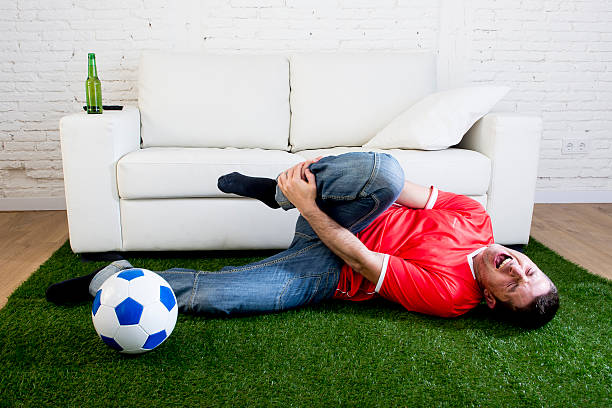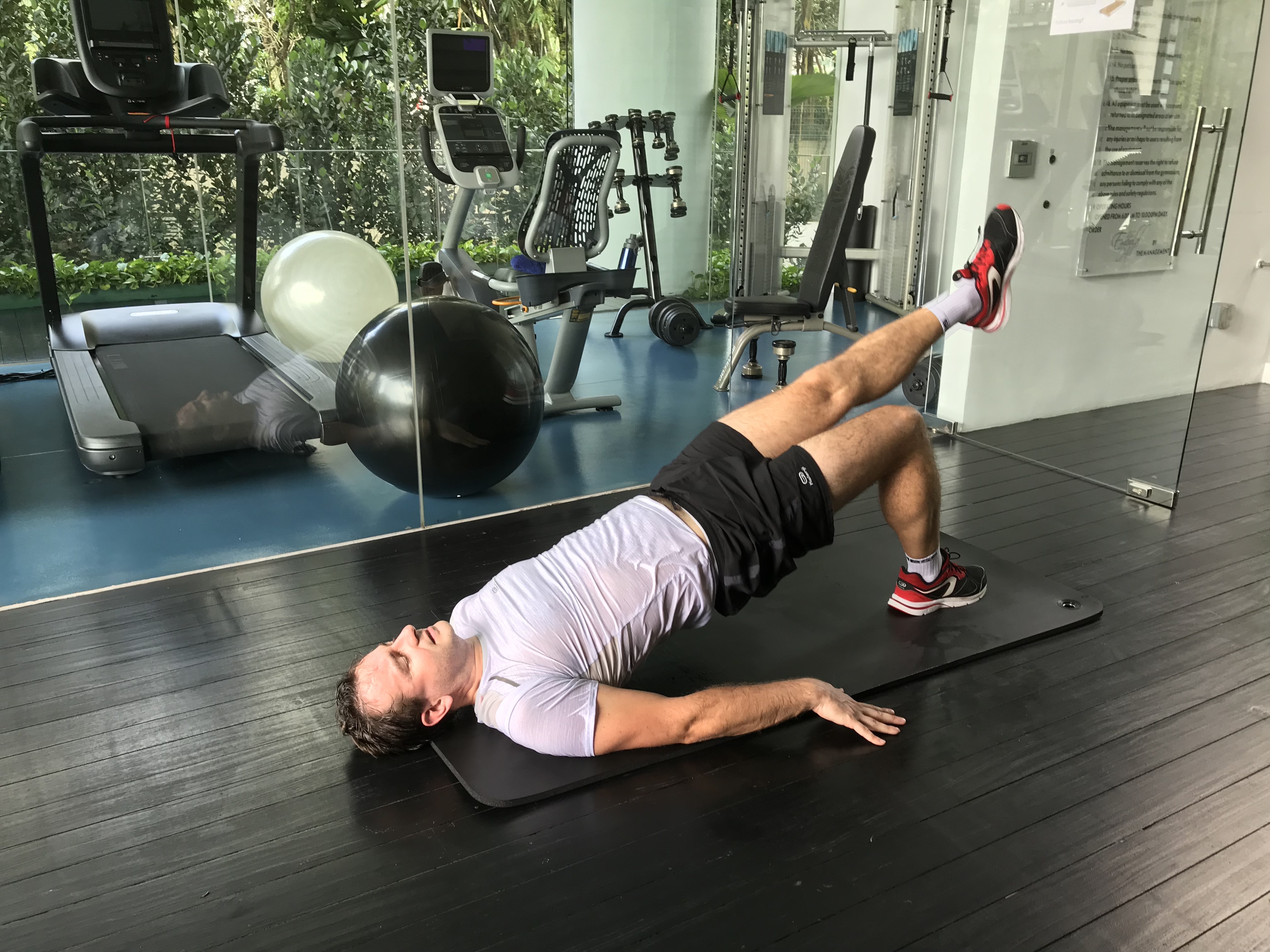What is a functional training workout?

A functional training program includes exercises that helps to improve your movements in your daily life. The word “functional” is used to describe how our body function naturally when we are moving around, carrying things, climbing stairs, jumping around with your kids or even chasing after a bus.
They were initially being used by physiotherapists for exercise rehabilitation treatment in hospitals and clinics. Through the years, it has became popular among fitness enthusiasts and can be seen doing it in the gym or even at home. Lots of new exercises are constantly created in the fitness community to help injured patients and disability to regain function in order to return to daily activities.
Functional exercises helps to target those overused muscles, making them stronger and more responsive. We mimic or imitate those daily movements (dashing, jumping, pulling, throwing, bending over etc) in our program.
Yes, these basic life movements can be complicated if we break it down. Although its our body natural response to move in a certain effective way, we shouldn’t take advantage of it and take things for granted. The truth is, accidents do happen.
Ask yourself, how many times have you strained or sprained an ankle or knee?
Why is there a sharp pull on your lower back when you lift heavy things?
Why do we still trip and fall even though we are fit and strong?

The answer is simple. As we age, our muscles do get weaker if we don’t exercise. Degeneration of bones (osteoporosis) occurs too. Our muscle strength and mobility decreases along with inactive lifestyle. We are no longer able to move as fast or carry heavy things as before. We need to improve the way we move around.
Actually we do all these functional movements everyday without knowing. Basic movements such as running, squatting, lungeing, pushing, pulling, trunk rotating and jumping. Most of the time we don’t even think about it when executing such movements due to our busy and hectic lifestyle. Injuries usually happen when we think we can do it, but we failed.
It could be due to many reasons. Muscle weakness, lack of balance, muscle instability, joint stiffness or even weak neuromuscular activity. Most of the time is due to post injury weakness.
Functional exercises for post injury and pregnant clients.
We strongly recommend this program to clients recovering from injuries or illness on top of their regular strength training.
It is also ideal for pregnant women to do such training. It replaces the typical high intensity workouts that might be too strenuous for them. There are some exercises involving abs and core that is not suitable for pregnant women but some how they still need to work on their upper and lower limbs to keep them strong. Functional movement workouts are the most ideal.
Does functional training helps in injury rehabilitation (benefits)?

- helps recovery by stimulating blood flow to the injured area
- improves neuromuscular activity in our body
- improves balance and stability
- allow major muscle groups to link and work together
- activates and works the core muscles
- activates our stabilising muscles
- Improves coordination
- improves flexibility
- improves mental focus and concentration
- helps to correct posture and body alignment
- Challenging but yet fun to do
- increase muscular strength and endurance
- involves compound movement (movement that uses 2 or more joints) which burns more calories
- huge variety of exercises (Trx, kettlebells, bodyweight, medicine balls, Swiss balls, elastic bands etc)
- improves sports performance (imitating exactly the same movements in our exercises)
- helps weight loss
What makes a good functional training exercise routine ?
- It should involve all major muscle groups (upper and lower body)
- it should activate the deep core muscles and stabilisers
- must be integrated into specific sports movements or daily life movements
- must involve all 3 planes of motion. Sagittal plane, frontal plane and transverse plane
- it must be proprioceptively engaged
- must be well oriented hitting different angles
- must involve dynamic movements
- activate both slow and explosive actions
- must include a variety of training components such as strength, cardiovascular, coordination, speed, agility, power and endurance.
- designed with careful monitoring and progression
- includes good safety guidelines
Functional training types and applications for everyone

At Pt works, we explore the basics and incorporate it into your personal training fitness routine. Further progressions into more advance movements are done after achieving basic cardio fitness and muscle strength.
Think functionality movement as an entire movement involving multiple muscle groups, not just a single specific muscle. The idea is to create an exercise movement that synergise primary muscle groups with secondary ones and not forgetting the deep core stabilisers.
Forget about doing single hand bicep curls (targeting only 1small muscle, bicep). Instead, do things like walking lunges with trunk rotation. Make sure the lower body and trunk is being worked at the same time.
Lets take jumping as an example. If you are going to improve your jumping power, we don’t just look at training the legs. We need to look at it as a coordinated effort with your cardiovascular system, nervous system and musculoskeletal system to make a smooth and fluid movement. We also look into the ground reaction force for pushing off and landing.
Our personal trainer Sean Lee emphasises:
“ We cannot do the same functional exercises for our clients with different age groups. As we age, our functional ability shifts.”
“Our daily activities changes at different stages of our life, therefore, exercise focus and types should be different too.”
A young athlete wants to focus on sports performance in order to get a medal, but an elderly person might just want to focus on getting up from a chair or stool. We look at what our clients need instead of what we think is right.
A comparison has to be made carefully between performance focus and functionality focus.
How to apply on different sports scenario?

For performance focus, we create exercises that simulate the actual activity as close as possible. The same type of joint actions, range of motion, speed, types of contraction (isometric, eccentric or concentric) and muscle groups.
Training for cyclist:
Lets take cycling as an example. The primary muscles for cycling are glutes and quadriceps. These are the main “powerhouse” for spinning the legs, producing great amount of torque and forces. So, formulate exercises involving these muscles and makes it more challenging by adding stabilising and core components to it.
Eg, instead of regular squats, do jumping squats instead.
For gluteus max and hamstrings, we do deadlifts right? Try doing single leg deadlift. Again, we makes it challenging by adding in the balancing training component.
Training for Boxing:
Lets take another example, boxing. The key upper body muscles for boxing are latissimus dorsi (lats), deltoids, rotator cuffs, trunk and obliques. For the lower body, they are quadriceps, calves and various hip muscles.
Breakdown the whole movement of a punch into different sections and study the human biomechanics.
A great functional exercise for boxing is shadow boxing with hand weights. Firstly, it mimics the boxing actions exactly and secondly, it strengthens your deltoids with the weights on your hands. Thus making it a very functional workout. Besides that, it burns a lot of calories too!
2 types: High intensity functional training and Low intensity functional training.
- High intensity functional exercises are very popular in military training. Especially in the Singapore Armed Forces (SAF). This training program works our soldiers in a variety of conditions that mimics war time scenarios. It is designed in a way to promote better physical preparations, physical endurances and intensive cardio training regimes.
Here at PT works, we are engaging our clients on high intensity functional work too, in order to create a more interesting and well balanced training plan. It burns more fats and improves overall fitness as well.
- Low intensity movements includes multiple coordination exercises and simulating animal movements such as leopard crawl, crab walks, bunny hops, crouching tiger and duck walks.
These low intensity work are also known as “primal” movement training or animal flow workout. They are great for improving limbs coordination and core strength. Helps you to create a smooth flow and locomotion of your body actions.
Start exercising in a functional way!
Yes, we encourage everyone from all ages and fitness levels to start incorporating some funky movements into their workouts. Don’t get us wrong. We shouldn’t forget the regular basic strength training and cardio work. We just add in more creativity and fun into the sessions, making it more original.
If you are new to training, do start slow and progress gradually into it as it might puts you at risk for injury.
Hit us up if you have any queries and start training!
About the author Sean Lee (Degree in Sports Science, fitness enthusiast)
